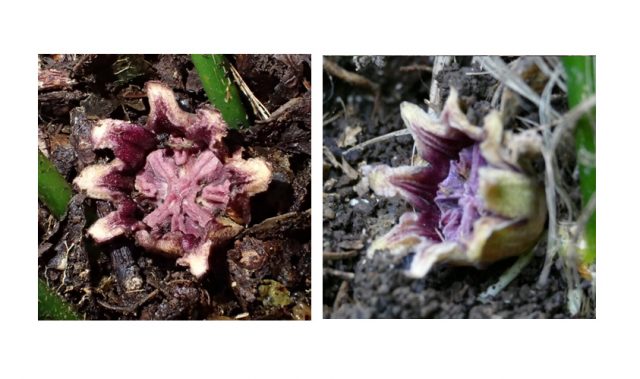
AsianScientist (Dec. 28, 2016) – By studying cucumbers grown in space, researchers have identified CsPIN1, a gravity-sensitive protein. Their findings have been published in Nature Microgravity.
Plants are experts in survival and can control the direction of their roots to maximize the use of resources around them. Using specialized cells, they can sense gravity and redistribute hormones, called auxins, to stimulate growth and allow vital features of the plant to develop. However, a big puzzle is how this transport process occurs at a cellular level.
To learn more, researchers in Japan examined cucumber seedlings germinated under the very weak gravity—or microgravity—conditions of the International Space Station.
Cucumbers were chosen for the study as they, like other cucurbitaceous seedlings such as melons, pumpkins and squash, feature specialized protuberances, or pegs, whose formation is regulated by gravity. These pegs form during the plant’s early growth stage to help the seedlings emerge from their hard seed coat and anchor the developing plant in the soil while its roots form.
When seeds are placed before germination either in a vertical position with their embryonic roots pointing down or subjected to microgravity conditions, a peg develops on each side, explains Hideyuki Takahashi, a member of the Space and Adaption Biology Laboratory at Tohoku University’s Graduate School of Life Sciences. But when they are placed horizontally on the ground, peg formation on the upper side is suppressed in response to gravity.
One of the big challenges facing the team was finding a suitable fixative to ‘freeze’ the status of the seedlings germinated on the space station so that the samples could be analyzed in detail back on Earth. Safety regulations on the space station prohibited the use of the standard fixing solution of ethanol, chloroform and acetic acid, but after much testing, the scientists developed an alternative based on a mixture of acetic acid, ethanol and distilled water.
Reunited with their cucumber seedlings back on Earth, the Japanese researchers used a staining technique to pinpoint changes in cellular behavior induced by gravi-stimulation. Examining cross sections of the seedlings under a microscope, the scientists found that the CsPIN1 protein can relocalize under the influence of gravity.
Specifically, this change in the position of CsPIN1 was found to occur in the so-called transition zone of the cucumber seedling, the area between the stem and the roots where the pegs develop. This relocalization stimulates the formation of a cellular canal capable of transporting growth hormones from one side of this zone to the other.
“This result helps to explain the gravity-regulated decrease in auxin level and thereby suppression of peg formation on the upper side of horizontally growing cucumber seedlings,” added Takahashi.
The article can be found at: Yamazaki et al. (2016) The Gravity-induced Re-localization of Auxin Efflux Carrier CsPIN1 in Cucumber Seedlings: Spaceflight Experiments for Immunohistochemical Microscopy.
———
Source: Tohoku University.
Disclaimer: This article does not necessarily reflect the views of AsianScientist or its staff.












